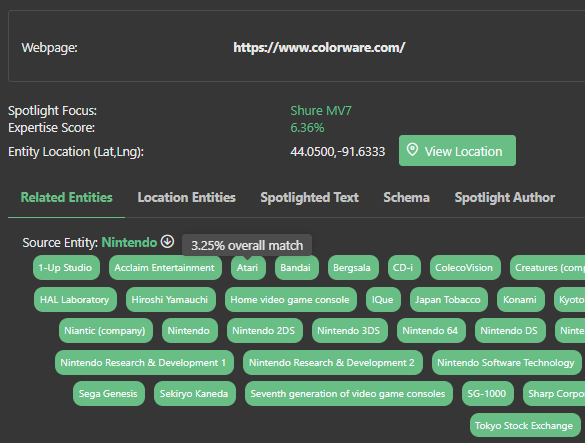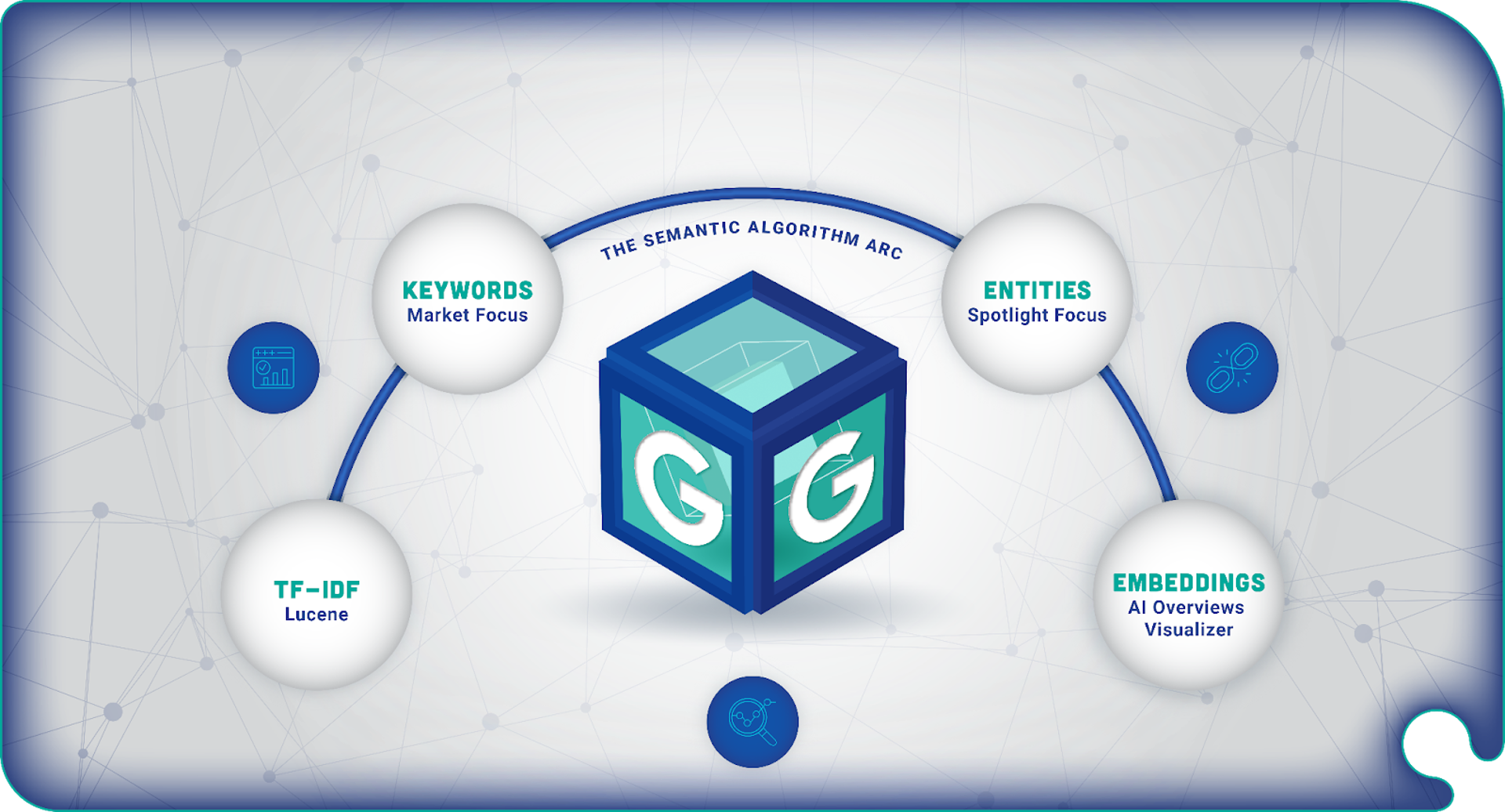Knowledge Graphs and Semantic SEO: How to Optimize Your Website for Improved Search Results
The rise of artificial intelligence and natural language processing has led to a new era of search engine optimization, known as semantic SEO.
This method focuses on using structured data and knowledge graphs to provide more accurate and relevant search results for users.
In this article, we will explore the basics of knowledge graphs and semantic SEO, including how they work, the benefits of using them, and how to implement them on your website.
We will also discuss the potential impact of knowledge graphs on the future of search engine optimization.
The world of search engine optimization (SEO) is constantly evolving, and with the rise of artificial intelligence (AI) and natural language processing, a new method known as semantic SEO has emerged. This approach focuses on using structured data and knowledge graphs to provide more accurate and relevant search results for users.
But what exactly are knowledge graphs and how do they work? And how can they be used to improve your website's search engine rankings? In this article, we will explore the basics of knowledge graphs and semantic SEO, including the benefits of using them and how to implement them on your website.
Introduction to Knowledge Graphs and Semantic SEO
At its core, semantic SEO is about using structured data and knowledge graphs to provide more accurate and relevant search results for users.
Structured data is a standardized format for providing information about a page or piece of content on the web.
This can include metadata, such as the page's title, description, and keywords, as well as information about the page's content, such as the main topic or categories it belongs to.
Knowledge graphs, on the other hand, are large, interconnected datasets that represent real-world entities and their relationships via different ontologies. For example, a knowledge graph might include information about a person, such as their name, occupation, and relationships to other people.
This information is then used by search engines to provide more relevant and personalized search results for users.
How Knowledge Graphs Work
So how do knowledge graphs actually work? Essentially, knowledge graphs are built using data from a variety of sources, including public databases, user-generated content, and proprietary information from companies.
This data is then organized into a graph structure, with entities (such as people, places, or things) represented as nodes and the relationships between them represented as edges.
For example, a knowledge graph might represent the relationship between a person and their employer as an edge connecting the person's node to the employer's node.
This allows search engines to understand the context of a query and provide more relevant search results.
The Google Knowledge Graph is a knowledge base used by Google and its services to enhance its search engine's results with information gathered from a variety of sources. The information is presented to users in an info box next to the search results.
These info boxes were added to Google's search engine in May 2012, starting in the United States, with international expansion by the end of the year. Google has referred to these info boxes, which appear to the right (top on mobile) of search results, as "knowledge panels".

The information covered by Google's Knowledge Graph grew quickly after launch, tripling its size within seven months (covering 570 million entities and 18 billion facts).
By mid-2016, Google reported that it held 70 billion facts and answered "roughly one-third" of the 100 billion monthly searches they handled. By May 2020, this had grown to 500 billion facts on 5 billion entities. There is no official documentation of how the Google Knowledge Graph is implemented.
According to Google, its information is retrieved from many sources, including the CIA World Factbook, Wikidata, and Wikipedia.
The Benefits of Using Knowledge Graphs for Semantic SEO
One of the key benefits of using knowledge graphs for semantic SEO is that they provide more accurate and relevant search results for users.
This can be particularly useful for queries that have multiple interpretations or are related to a specific topic or entity.
For example, if a user searches for "Tom Hanks," a traditional search engine might return results for the actor Tom Hanks, as well as other people named Tom Hanks. However, with a knowledge graph, the search engine can use the information in the graph to understand the context of the query and provide results specifically for the actor Tom Hanks.
In addition to providing more relevant search results, knowledge graphs can also help improve the overall user experience on your website by making it easier for users to find the information they are looking for. This is because knowledge graphs allow search engines to understand the relationships between different entities and provide more intuitive navigation options, such as related links or suggested searches.
Another benefit of using knowledge graphs for semantic SEO is that they can help your website rank higher in search engine results. This is because search engines use the information in knowledge graphs to understand the context and relevance of a page, which can impact its ranking.
For example, if a page on your website is about a specific topic and is connected to relevant entities in the knowledge graph, it is more likely to rank higher for related searches than a page that is not connected to the knowledge graph.
Implementing Knowledge Graphs on Your Website
So how can you implement knowledge graphs on your website to improve your search engine rankings?
The first step is to identify the entities and relationships that are relevant to your website and its content. This might include information about your products or services, the categories they belong to, and any related entities, such as customer reviews or industry-related news articles.
Once you have identified the relevant entities and relationships, you can use structured data markup to add this information to your website. Structured data markup is a standardized format for providing information about a page or piece of content, and it can be added to your website using a variety of methods, including HTML tags, JSON-LD, or RDFa.
Once you have added structured data markup to your website, you can use Google's Structured Data Testing Tool to test and validate your markup to ensure it is correct and can be used by search engines. You can also use Google's Search Console to see how your website is performing in search results and identify any issues or errors with your structured data markup.
The Future of Knowledge Graphs and Semantic SEO
The use of knowledge graphs and semantic SEO is likely to continue to grow in importance as search engines continue to evolve and improve their understanding of natural language and user intent.
This means that implementing knowledge graphs on your website will become increasingly important for improving your search engine rankings and providing a better user experience for your visitors.
In addition to the benefits discussed above, knowledge graphs and semantic SEO have the potential to enable new and exciting features and capabilities for search engines. For example, knowledge graphs could enable search engines to provide more personalized and context-aware search results, or to enable users to ask more complex and nuanced questions and receive accurate and relevant answers.
Overall, knowledge graphs and semantic SEO are an important and growing area of search engine optimization, and implementing them on your website can provide significant benefits in terms of improved search engine rankings and a better user experience for your visitors. Whether you are just starting out with semantic SEO or are looking to improve your existing efforts, understanding and utilizing knowledge graphs can be a valuable tool in your search engine optimization arsenal.
One of the key challenges of implementing knowledge graphs and semantic SEO is the need for high-quality and accurate data. In order for knowledge graphs to be effective, they must be built using reliable and accurate data sources. This can be a challenge, particularly for businesses that have proprietary or confidential information that cannot be easily shared.
One potential solution to this challenge is to use a combination of public and proprietary data sources to build a knowledge graph. For example, a business could use publicly available data from government or industry sources, as well as their own proprietary data, to create a knowledge graph that is both comprehensive and accurate.
Another challenge of implementing knowledge graphs and semantic SEO is the need for technical expertise and resources. Adding structured data markup to a website can be a complex and time-consuming process, and it requires a certain level of technical expertise to ensure it is done correctly. This can be a barrier for businesses that do not have the in-house resources or expertise of large enterprise SEO teams, in order to implement knowledge graphs on their own.
One potential solution to this challenge is to work with a third-party provider or agency that specializes in semantic SEO and has the expertise and resources to implement knowledge graphs on your website. These providers can help you identify the relevant entities and relationships for your website, add structured data markup to your pages, and validate and test your markup to ensure it is correct and can be used by search engines.
The Market Brew Knowledge Graph
Market Brew's advanced SEO software takes a similar approach to Google and uses data from Wikidata sources to build its own in-house Knowledge Graph.
The Market Brew Knowledge Graph gives its semantic entity SEO algorithms the ability to access and process with the same precision as Google does.
Market Brew's Knowledge Graph is accessible from any Spotlight, Spotlight Author, or Spotlight Focus screens, and is entries are linked to whenever a corresponding entity is highlighted.

Each Market Brew Named Entity contains its own Abstract, Subject Topics, and Expert Topics.
This allows users to instantly pull in the appropriate content for the page, in order to direct the topic cluster towards the correct entities, and then instantly test those content changes to make sure the newly formed topic cluster is the intended one.

In addition, users can drill down into the entity and add content that is considered a conversation that an expert would be writing about, had they been the author of the web page.

Click on any of the Expert Topics and visit their own individual Knowledge Graph entry.
The Knowledge Graph is a crucial component of many semantic SEO algorithms inside the Market Brew search engine model and is part of a broad semantic algorithm arc.

In conclusion, knowledge graphs and semantic SEO are an important and growing area of search engine optimization, and implementing them on your website can provide significant benefits in terms of improved search engine rankings and a better user experience for your visitors.
While there are challenges and barriers to implementing knowledge graphs, the potential benefits make it worth considering for businesses looking to improve their search engine optimization efforts.
Schedule a demonstration today via our Menu Button and Contact Form to discover how we engineer SEO success.
You may also like
Guides & Videos
Natural Language Processing in SEO
Guides & Videos
Others
The Ultimate Guide for Visual Search Optimization (VSO)
Guides & Videos


